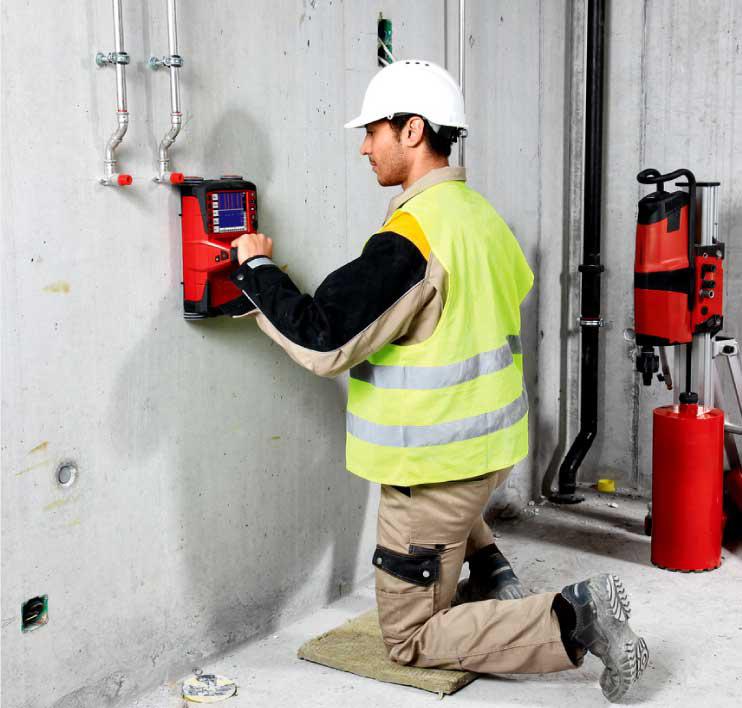The Ultimate RainierGPR Concrete Scanning Option Described
Wiki Article
Harness the Strategic Edge of Concrete Scanning for Unparalleled Project Success and Quality Assurance
In the world of modern building and infrastructure growth, the usage of concrete scanning innovation has actually emerged as a crucial tool for ensuring job success and keeping quality criteria. The true power of concrete scanning lies not just in its ability to improve task outcomes however additionally in its capacity to reinvent typical practices, establishing a new benchmark for accuracy and efficiency in the building sector.The Importance of Concrete Scanning
Concrete scanning is a necessary action in construction jobs to make certain the safety and integrity of structures. By using numerous scanning technologies such as Ground Penetrating Radar (GPR) and electro-magnetic induction, building groups can non-destructively evaluate the subsurface of concrete structures to identify prospective dangers like rebar, avenues, or post-tension wires. This information is essential for job supervisors, service providers, and designers to make enlightened choices and stay clear of pricey blunders throughout the building and construction procedure.Among the main reasons why concrete scanning is so important is its capability to stop accidents and injuries on the construction site. Unintentionally puncturing a real-time electric channel or damaging post-tension cables can have tragic consequences, not only in terms of security however also in terms of project hold-ups and economic effects. By carrying out thorough concrete scanning before any drilling, reducing, or coring activities, construction groups can minimize dangers and develop a much safer working atmosphere for every person entailed.
In enhancement to safety factors to consider, concrete scanning likewise plays a key duty in making sure the long-term durability and top quality of the framework. By identifying any type of abnormalities or problems hidden under the surface, such as gaps or delamination, early treatment can be implemented to resolve these concerns before they rise into even more considerable troubles. Eventually, spending in concrete scanning is a proactive action that can save time, cash, and resources in the future, while also promoting the highest requirements of building quality.
Advanced Innovation for Precise Results

In addition, 3D scanning technologies provide an extensive view of the subsurface environment by creating comprehensive digital models. These models supply beneficial insights into the structural stability of concrete elements and aid in recognizing prospective weaknesses before they escalate right into significant problems. By integrating these advanced technologies right into concrete scanning techniques, building and construction teams can improve workflows, reduce task hold-ups, and guarantee the overall top quality and success of the job. The precision and effectiveness offered by these tools contribute considerably to the job's success by assisting in notified developing and decision-making top quality assurance measures.
Enhancing Project Effectiveness and Timelines

In addition, concrete scanning enables groups to identify structural weak points and possible dangers early on, allowing for timely remediation and avoiding accidents that might hinder task timelines. The real-time information supplied by scanning devices assists in notified decision-making, causing smoother sychronisation among different trades and stakeholders. This enhanced cooperation decreases problems, boosts performance, and eventually accelerates job delivery.
Furthermore, by proactively dealing with issues via concrete scanning, building use this link and construction groups can comply with schedules more properly, minimize downtime, and enhance resource appropriation. The capacity to discover covert obstacles and validate structural integrity successfully adds to overall task effectiveness and timelines, guaranteeing effective results and client contentment.
Ensuring Security and Threat Reduction

Risk mitigation approaches can be boosted with the comprehensive details offered by concrete scanning, enabling job teams to make educated decisions that decrease the likelihood of unexpected occurrences. Additionally, by properly mapping out subsurface conditions, professionals can avoid pricey rework, hold-ups, and damage to existing structures, additionally adding to total job safety and success. Implementing concrete scanning as a regular method not just guarantees a more secure work setting but additionally imparts confidence in stakeholders pertaining to the project's dedication to top quality and risk monitoring.
Quality Control Via Concrete Scanning
Concrete scanning plays a critical role in maintaining quality guarantee requirements within building and construction jobs. By utilizing innovative scanning technologies such as Ground Passing Through Radar (GPR) and Concrete X-ray, project supervisors and engineers can make certain the stability and top quality of concrete structures. Via concrete scanning, potential flaws, such as voids, splits, or check my source reinforcing bar congestion, can be detected non-destructively, permitting timely interventions to keep the structural honesty of the project.Quality guarantee via concrete scanning not only assists in identifying existing problems yet also allows aggressive procedures to stop future troubles that might compromise the safety and durability of the structure. By conducting comprehensive scans at essential phases of construction, groups can validate the precision of structural plans, verify the positioning of critical aspects, and attend to any kind of deviations quickly. This positive strategy decreases rework, reduces expensive delays, and eventually brings about the distribution of top quality, resilient frameworks that satisfy or go beyond sector criteria.
Verdict
In verdict, concrete scanning plays an essential function in guaranteeing project success, performance, security, and top quality guarantee. The tactical side offered by concrete scanning permits for positive threat mitigation and boosts general task administration.In the world of contemporary construction and facilities development, the use of concrete scanning technology has arised as a critical device for ensuring task success and maintaining high quality standards. By integrating these sophisticated innovations right into concrete scanning practices, building groups can improve operations, reduce job hold-ups, and ensure the general top quality and success of the project.Provided the essential nature of project efficiency and timelines in construction monitoring, the emphasis now shifts towards ensuring security and mitigating risks within the task atmosphere.Concrete scanning plays a critical role in promoting high quality assurance standards within building and construction tasks. By using advanced scanning technologies such as Ground Passing Through Radar (GPR) and Concrete X-ray, task supervisors and designers can ensure the integrity and quality of concrete structures.
Report this wiki page